Black bear cub watercolor painting celebrates the natural beauty and innocence of these young animals. This form of art adds a gentle, playful touch to any setting while capturing the charm of wildlife.
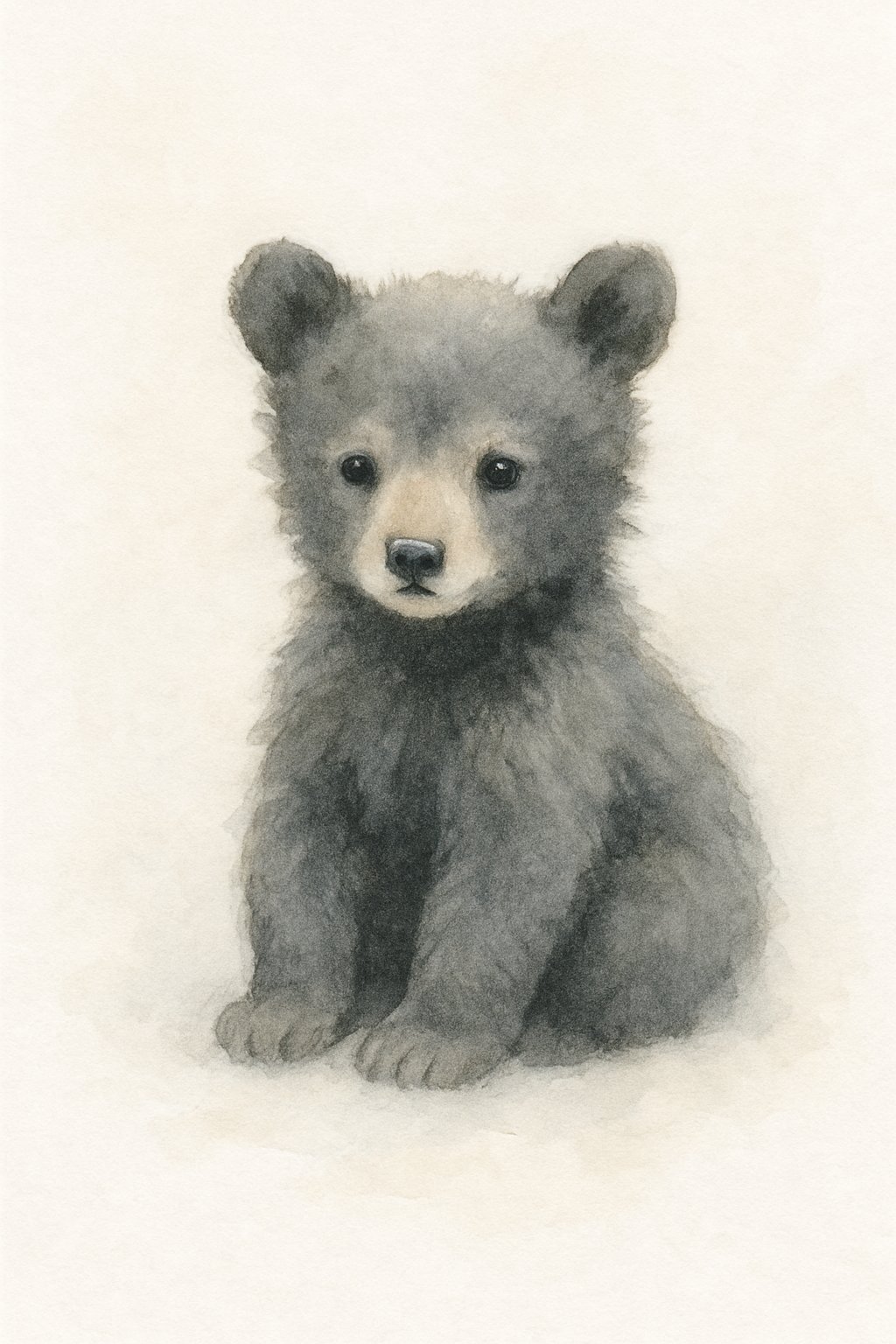
Many artists and nature lovers enjoy displaying or creating these paintings for home décor or as thoughtful gifts. Interest in this subject continues to grow, making it a popular theme in both beginner and intermediate art projects.
1) Black Bear Cub Watercolor by Sagebay Designs, featuring a mother and cub in a fine art print
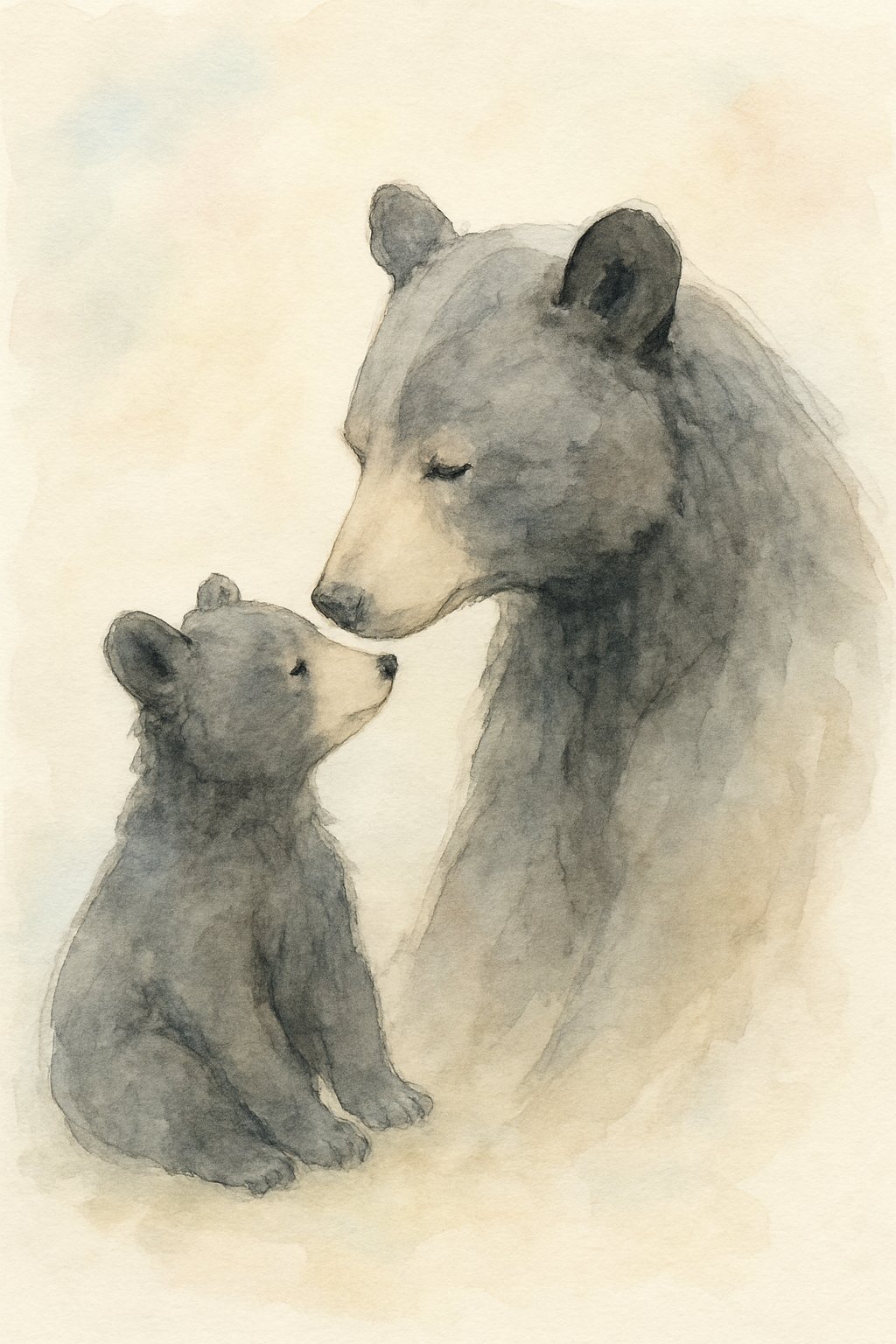
Sagebay Designs offers a watercolor painting that shows a mother black bear with her cub. The artwork highlights the natural bond between the bears.
This fine art print measures 5.5 x 4 inches and is great for display in any space. Find more details at Sagebay Designs’ Black Bear and Cub Watercolor.
2) Downloadable Black Bear Cub PDF Tutorial for realistic painting guidance
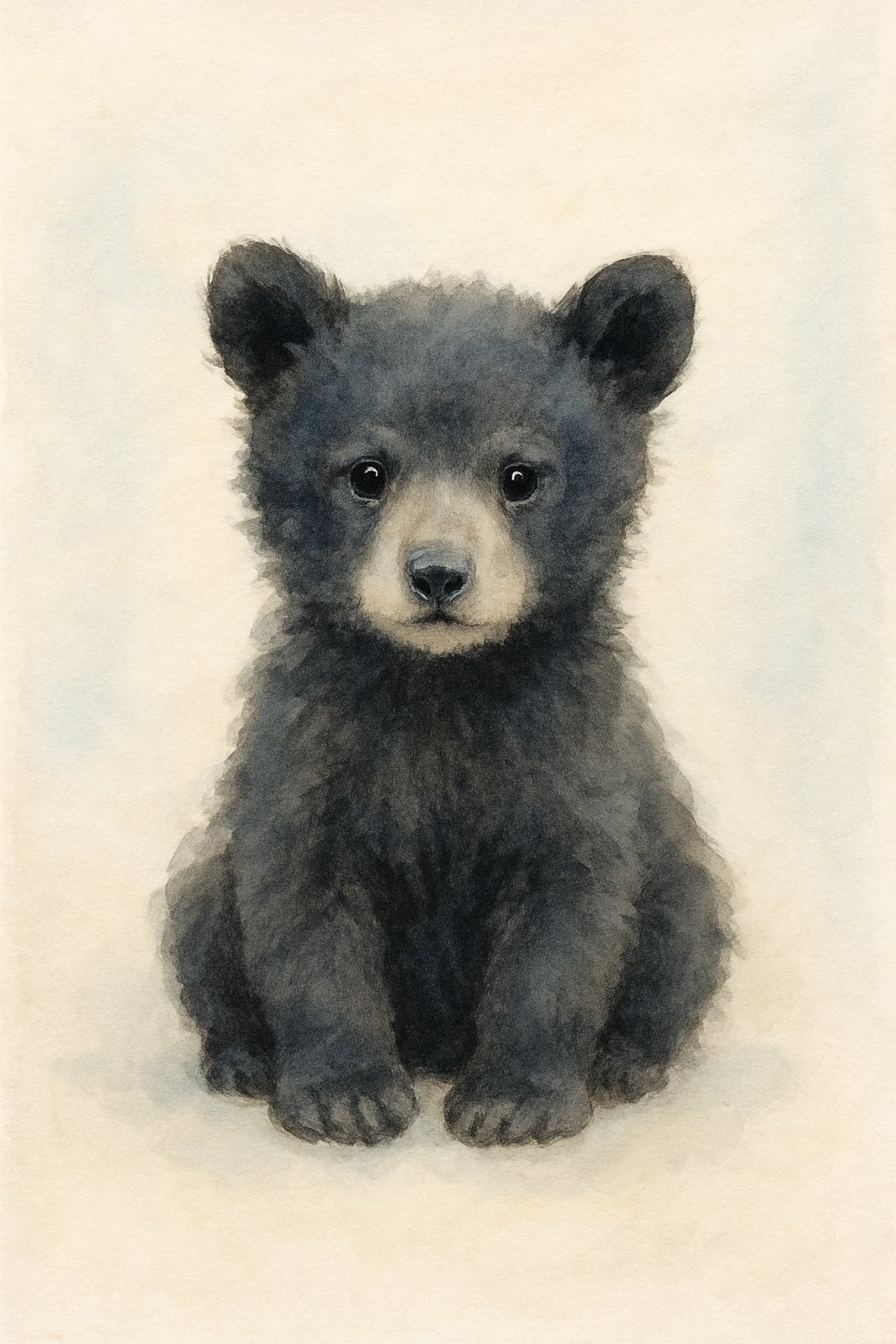
Artists can find helpful step-by-step instructions in a downloadable Black Bear Cub PDF tutorial. The guide shows how to paint the cub using clear, easy directions.
This type of resource often includes tips, reference photos, and drawing guides. For more details, view a realistic watercolor painting tutorial.
3) Quick watercolor tutorial video for Mountain Arts Festival bear painting
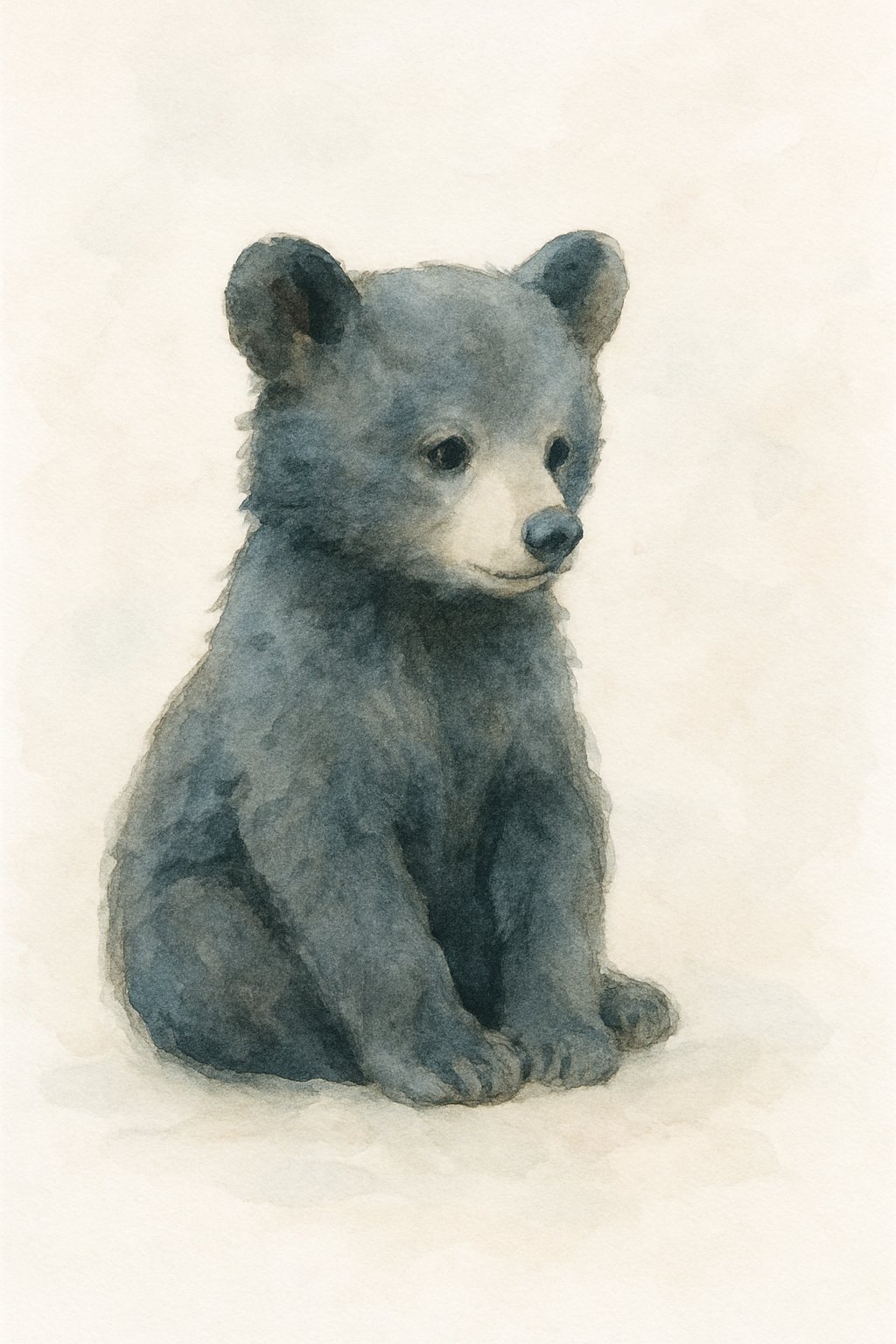
A short watercolor video on YouTube shows an artist painting a black bear cub just for the Mountain Arts Festival.
The tutorial highlights simple brush techniques and quick color layering.
Anyone curious can watch the video about painting a black bear cub for the festival.
4) Black Bear Cub Watercolor Painting digital art, instantly downloadable
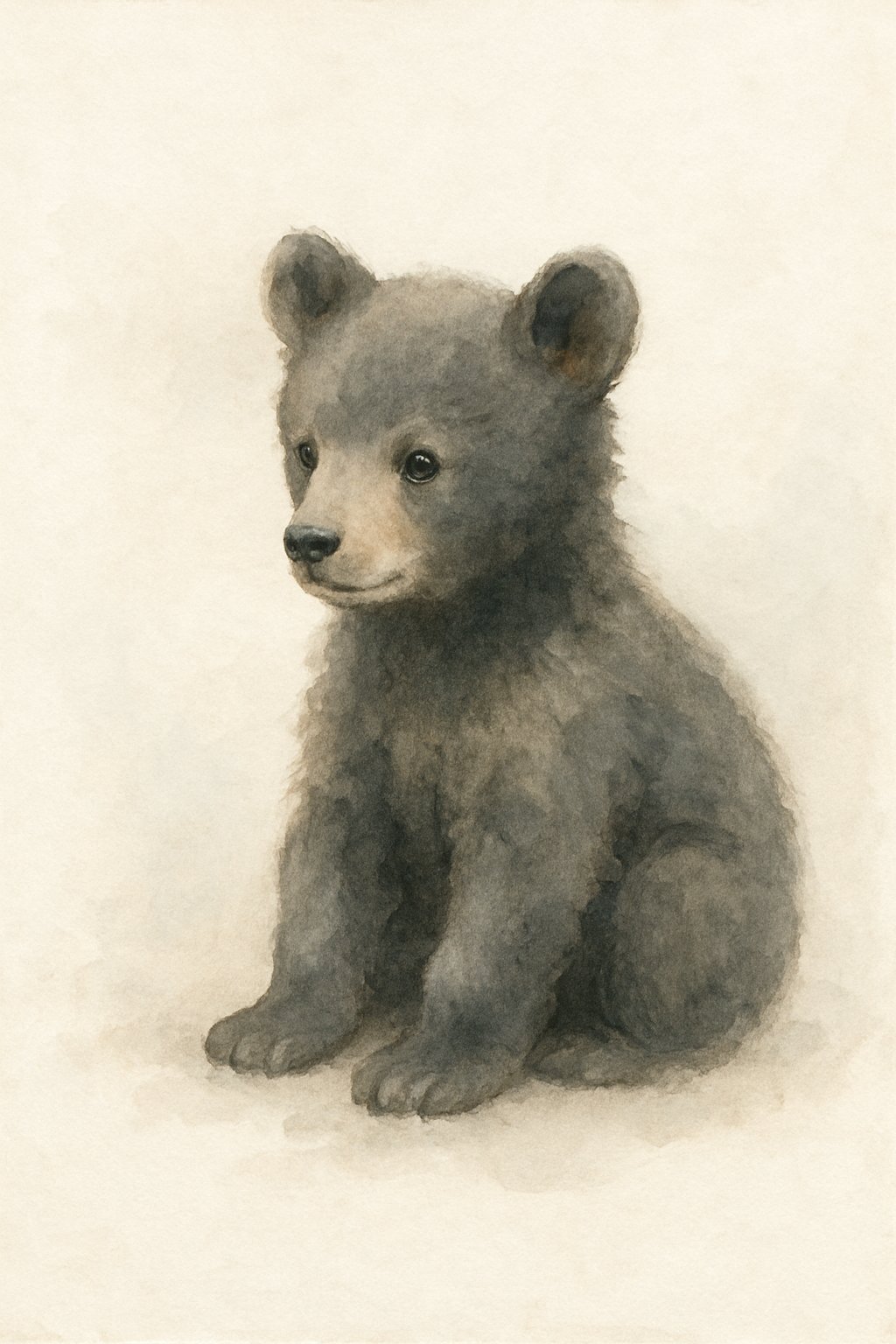
Digital art makes black bear cub watercolor paintings easy to access. Buyers can download the artwork right after purchase.
This method allows for quick printing and display at home or in the office. Many shops on Etsy offer instantly downloadable black bear cub watercolor art.
5) Pinterest collection of black bear cub watercolor ideas and inspiration
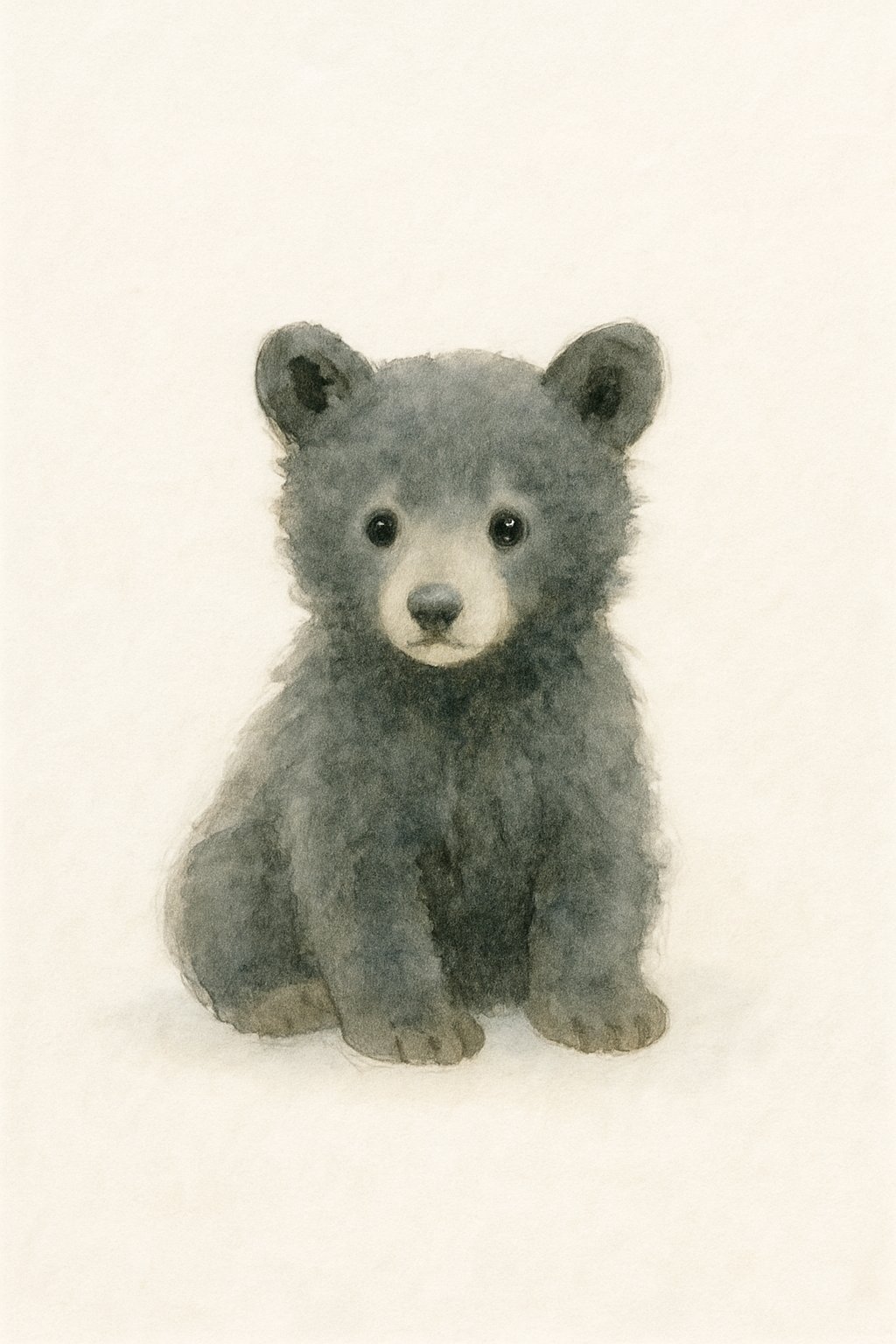
Pinterest has many collections featuring black bear cub watercolor paintings. These collections include a variety of artwork styles, from playful and whimsical to more realistic depictions.
Users can browse different boards for unique ideas and to view paintings by various artists. For more inspiration, visit a Pinterest collection of black bear cub watercolor paintings.
Techniques for Painting Black Bear Cubs in Watercolor
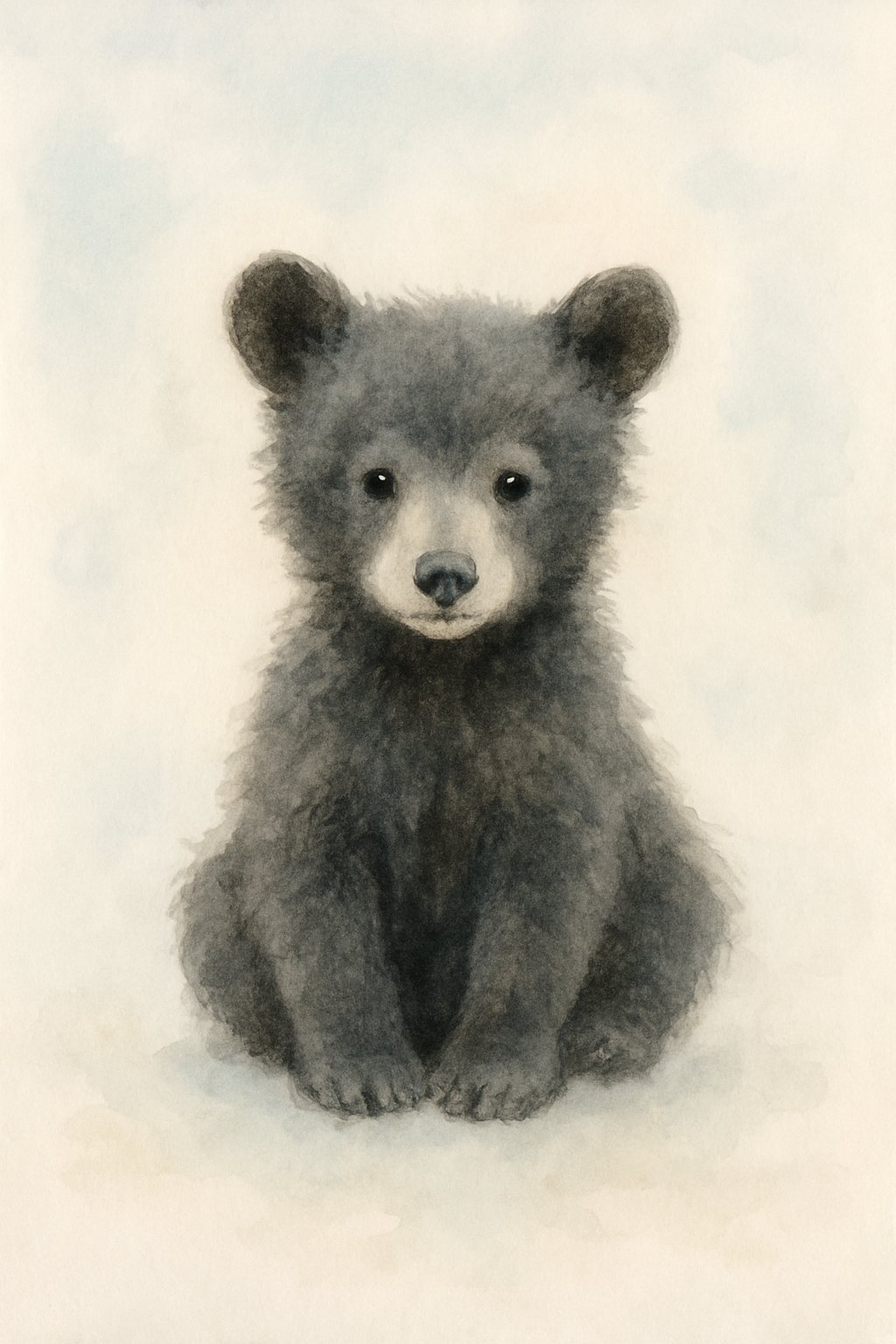
Painting a black bear cub in watercolor requires careful attention to layers, textures, and details. Artists should use a mix of patience and technique to get realistic results, especially with the soft look of fur and the brightness of the eyes.
Layering and Blending Colors
Building up a black bear cub’s shape starts with gentle color washes. Begin with a light, cool gray or blue base for the fur, letting the first layer dry before adding deeper tones. This helps to create depth and a more natural look.
Artists can use wet-on-wet for soft, blurred edges, or wet-on-dry to add crisp sections of shadow. Blend darker colors into lighter ones carefully, as overworking can cause muddiness.
A simple table for foundational color choices:
| Area | Suggested Base Color | Shadows | Highlights |
|---|---|---|---|
| Fur | Light gray/blue | Indigo/brown | Diluted ochre |
| Nose/Paws | Warm brown | Dark brown | Pink wash |
Allow each layer to dry before applying the next to avoid mixing unwanted hues. Glazing with thin paint layers increases contrast without losing softness. For step-by-step guides, see this bear cub watercolor tutorial.
Capturing Fur Textures
Black bear cubs have thick, soft fur that looks different in sunlight and shade. To get this effect, use a small, round brush or even a rigger brush to paint short, fine strokes. Vary brush direction to mimic the natural pattern of the fur.
Dry brush technique works well for suggesting clumps of fur along the ears, face, and shoulders. Let the brush run out of paint slightly before touching the paper, so the stroke has texture. Layer the strokes to build up body and volume.
Use lifting with a clean, damp brush or a piece of paper towel to pull out highlights and help separate light fur from dark areas. To see more methods, check out these tips for painting fur in watercolor.
Painting Expressive Eyes
The eyes of a bear cub bring personality and life to the painting. Start by sketching the basic shape lightly, making sure the size and placement are correct. Begin with a pale wash, then deepen the color near the edges to make the eyes look round.
Leave a small spot unpainted or add a touch of white gouache for a natural-looking reflection. This step makes the eyes look moist and realistic. Add dark lines for lashes and eyelids, but avoid making them too harsh or heavy.
Use gentle color gradients to capture the natural darkness of bear eyes, with a hint of warm brown or gold for depth. For a full video demonstration, refer to this realistic bear cub tutorial.
Color Selection and Palette Considerations
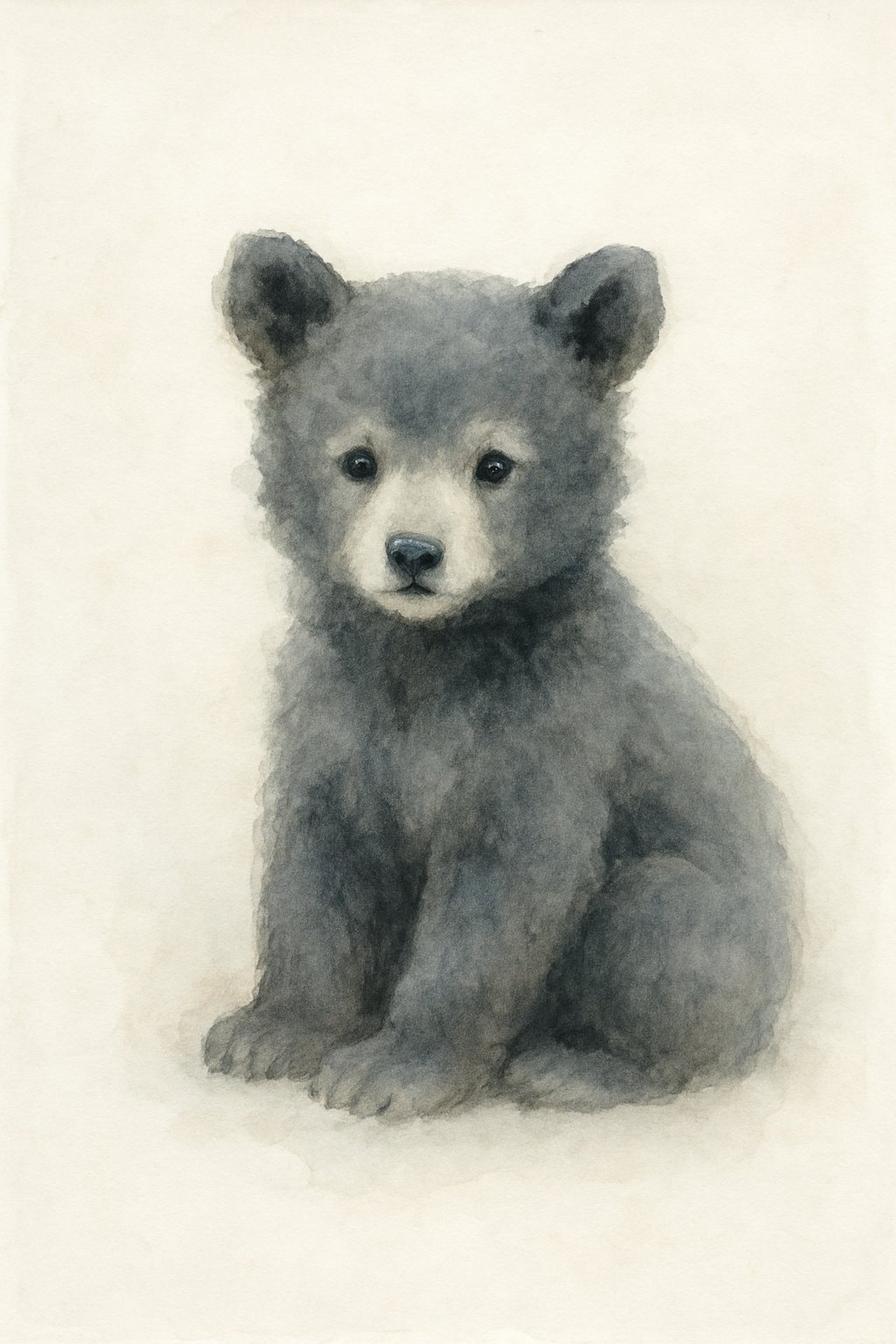
Careful color selection helps make a black bear cub painting look both natural and lively. Choosing suitable pigments and a limited, well-coordinated palette simplifies the process and strengthens realism.
Choosing the Right Pigments
Picking the right pigments is important for painting a black bear cub because it creates realistic fur and textures. Artists often select paints such as Payne’s Gray, Burnt Umber, Ivory Black, and Ultramarine Blue. These colors make it easy to capture the cool and warm undertones found in black bear fur.
For highlights and reflected light, touches of Raw Sienna, Yellow Ochre, or even Cerulean Blue can add dimension to the fur and the environment. Many artists avoid using pure black out of the tube; instead, they mix dark shades to keep the bear’s appearance soft and lifelike. A small set of well-chosen pigments helps achieve consistent color mixing throughout the painting. More suggestions for color combinations can be found in this step-by-step watercolor guide.
Creating Depth with Limited Colors
Using only a few colors is a smart way to create depth and harmony in the painting. Limited palettes usually consist of three to five shades, allowing artists to focus on values and layers rather than getting distracted by too many options.
By layering thin washes of color, it is possible to develop shadows and highlights without making the painting look muddy. For example,
- Start with a light wash of pale brown or blue for the base.
- Add darker washes in stages, letting each layer dry for crisp edges.
- Use pale colors in the background to make the cub stand out.
Restricting the palette also helps keep colors clean and prevents overmixing, leading to a cohesive and vibrant painting. For more color inspiration, see different bear color palettes at iColorpalette.
Frequently Asked Questions
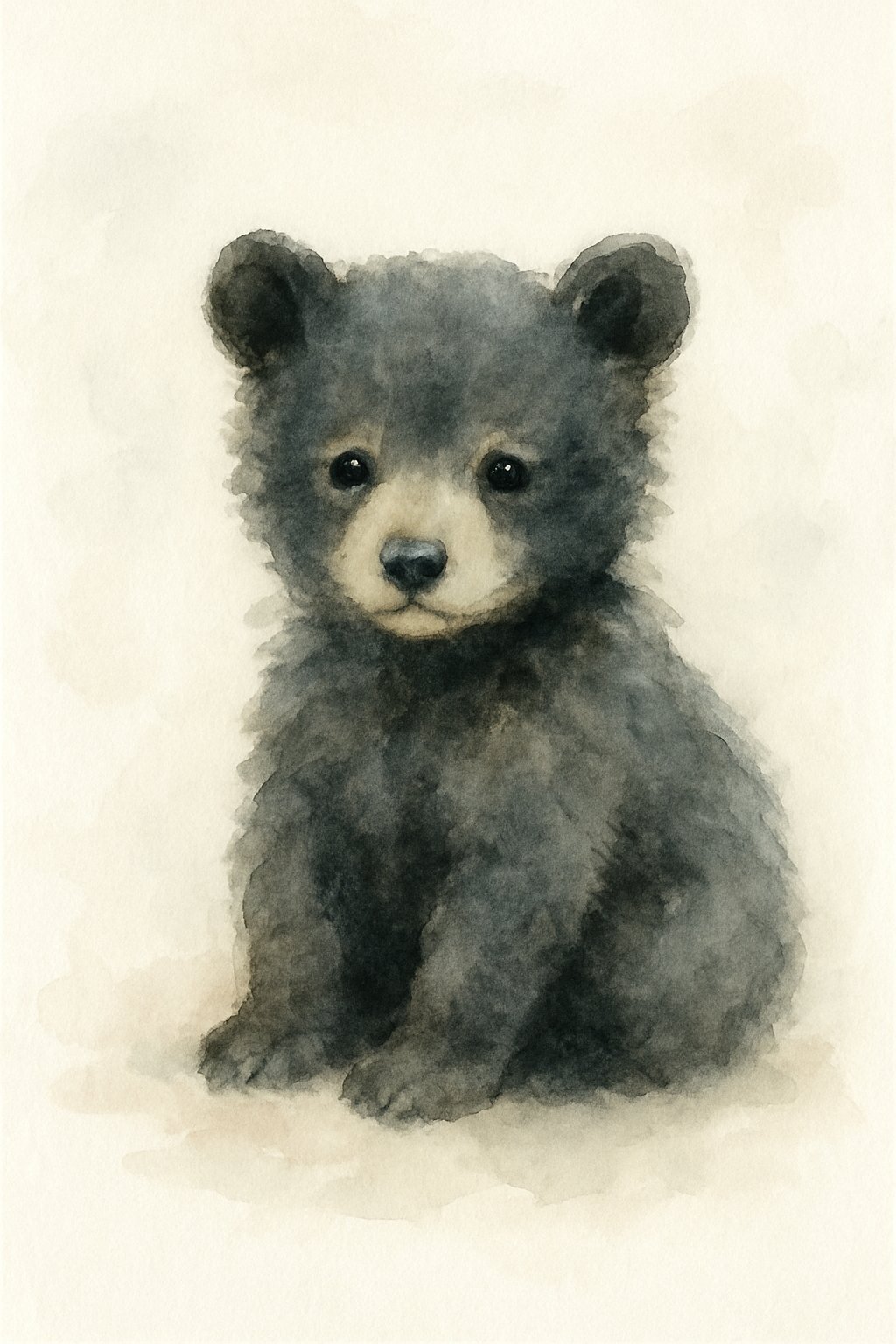
Using watercolor to paint a black bear cub involves unique approaches for backgrounds, realistic fur texture, and color blending. Many painters want straightforward techniques and guides designed for wildlife subjects like bear cubs, especially for capturing lifelike detail in fur and expression.
How do I create a watercolor wash for a bear cub background?
A light, even wash in soft greens, blues, or warm earth tones helps set a natural forest atmosphere. Artists usually start by wetting the paper, then apply diluted paint in broad strokes. Let each layer dry before adding another wash for depth. This prevents muddying colors and keeps edges soft.
What techniques are best for adding details to a bear cub in watercolor?
Small, round brushes allow for precise strokes when highlighting features like eyes or fur around the muzzle. Working from light to dark builds up the forms slowly. Layering thin, controlled glazes intensifies details without making the painting too heavy.
What are some color mixing tips for achieving a realistic black bear fur tone?
To create rich black fur, mix ultramarine blue, burnt umber, and a touch of ivory black or neutral tint. Avoid using just straight black, as it can look flat. Adjust the mix with blue or brown as needed to reflect light or shadow. For highlights, add titanium white or lighter earth tones in thin, gentle layers.
Can you recommend a step-by-step guide for painting a bear cub with watercolors?
A helpful, structured option is a downloadable Black Bear Cub PDF Tutorial. This guide covers everything from sketching to final layers and is specifically focused on realistic black bear cubs. You can also find a video tutorial for a quick bear painting that is beginner-friendly.
How do I capture the texture of bear fur in a watercolor painting?
To mimic soft fur, use short, directional brush strokes, varying color and intensity. Dry brush technique helps add rougher patches or subtle highlights. Layering strokes of different colors, while keeping edges irregular, mimics the changing look of real fur. Watching tips for painting realistic animal fur can provide more detail.
What are the common challenges when painting wildlife, such as bear cubs, in watercolor, and how can I overcome them?
One challenge is keeping the proportions correct, as slight changes can ruin the natural look. Lightly sketching basic shapes first helps. Another issue is blending colors smoothly without overworking the paper. Working in controlled layers and letting each dry before continuing keeps details sharp and colors clear. Look for reference collections like Pinterest ideas for black bear cub watercolor for inspiration and composition tips.
